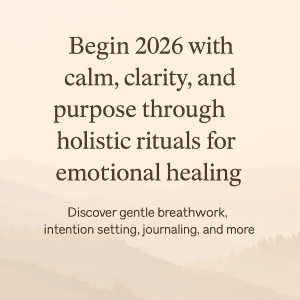In our fast-paced world, finding moments of calm can feel like chasing shadows. Stress often seems like an inevitable part of our daily grind. But what if we could pause, breathe, and bring a moment of tranquility into our hectic routines?
That’s where 5-minute mindfulness steps in – a simple, yet profound practice to soothe your mind in the blink of an eye. Let’s dive into some quick stress relief tips that you can seamlessly weave into your day.
What is 5-Minute Mindfulness?
Five-minute mindfulness revolves around the idea of taking short, focused breaks to reconnect with the present moment. It doesn’t require you to carve out large chunks of your day or master complex techniques. Instead, it’s about recognizing the power of brief mindfulness practices to rejuvenate your spirit. These quick mindfulness sessions can help reduce stress, improve concentration, and bring a sense of balance to your daily life.
Imagine the simplicity of it—just five minutes, 300 seconds. In a world where even a coffee break can feel like a luxury, this approach to mindfulness asks only for a fraction of your time, promising returns that are immeasurable. It’s about finding those pockets of calm amidst the chaos, allowing your mind and body to reset and recharge.
Quick Tips for Daily Stress Relief
Breathing Exercises
One of the easiest and most effective ways to practice mindfulness is through breathing exercises. Find a quiet spot, close your eyes, and take a deep breath in through your nose. Hold it for a count of four, then slowly exhale through your mouth. Repeat this for a few minutes, allowing your mind to focus solely on your breath. This simple practice can calm your mind and reduce stress almost instantly.
To deepen the practice, consider incorporating the 4-7-8 breathing technique. Inhale quietly through your nose for four seconds, hold your breath for seven seconds, and exhale completely through your mouth for eight seconds. This method not only helps to reduce anxiety but also improves overall sleep quality, making it a double win in stress relief.
Click here to search for certified organic essential oils and other aromatherapy products.
Body Scanning
Body scanning involves paying attention to the different parts of your body, from head to toe. Start by closing your eyes and taking a few deep breaths. Begin with your toes, noticing any sensations or tension. Gradually move your attention upwards, through your legs, abdomen, chest, arms, and finally to your head. This exercise helps you become more aware of your body, releasing any physical tension you might be holding onto.
To enhance this practice, combine it with progressive muscle relaxation. As you focus on each part of your body, tense the muscles in that area for a few seconds and then release. This can help in further alleviating stress and promoting a sense of relaxation and wellbeing.
Mindful Walking
If you’re feeling overwhelmed, take a few minutes to step outside for a mindful walk. Focus on the sensation of your feet hitting the ground, the rhythm of your steps, and the sights and sounds around you. Leave your phone behind and fully immerse yourself in the experience. Even a short walk can clear your mind and provide a much-needed break from stress.
To make your mindful walking even more effective, try the “five senses” exercise. As you walk, pause for a moment and note five things you can see, four things you can touch, three things you can hear, two things you can smell, and one thing you can taste. This sensory engagement can deepen your connection to the present moment and enhance the calming effects of your walk.
Gratitude Moments
Practicing gratitude is a powerful way to shift your focus from stress to positive aspects of your life. Take a moment each day to reflect on three things you’re grateful for. These can be simple, like a warm cup of tea, a kind word from a friend, or the beauty of a sunset. By cultivating gratitude, you can foster a positive mindset and reduce feelings of stress.
To integrate gratitude more deeply into your daily routine, consider keeping a gratitude journal. Spend a few minutes each day jotting down things you are thankful for. Over time, you’ll have a tangible record of positivity to reflect on, which can be especially uplifting during challenging times.
Visualization Techniques
Visualization involves creating mental images to promote relaxation and stress relief. Close your eyes and imagine yourself in a peaceful place, like a beach, forest, or garden. Engage all your senses – feel the warmth of the sun, hear the sound of waves, and smell the fresh air. This practice can transport you to a place of calm, even if only for a few minutes.
For a more structured approach, try guided imagery. There are many apps and online resources offering guided visualizations that can lead you through a mental journey to relaxation. By following a guided script, you may find it easier to immerse yourself in the visualization, achieving a deeper level of stress relief.
Implementing Mindfulness in a Busy Schedule
Incorporating mindfulness into a busy schedule might seem challenging, but with a little creativity, it’s entirely possible. Set reminders on your phone to take short mindfulness breaks throughout the day. Use daily activities as opportunities for mindfulness – for example, practice mindful breathing while waiting in line or during your commute. There are also numerous mindfulness apps available that offer guided exercises and tips to help you stay consistent.
Another practical tip is to create a “mindfulness corner” in your home or office. This space doesn’t need to be elaborate—a comfortable chair, a few cushions, or even a soft blanket can create a cozy nook for your mindfulness practice. Having a dedicated space can serve as a physical reminder to take those five-minute breaks, making it easier to incorporate them into your routine.
Mindfulness can also be a social activity. Encourage friends, family, or colleagues to join you in your mindfulness practices. Whether it’s a mindful walk, a group breathing exercise, or a shared moment of gratitude, practicing mindfulness with others can be a bonding experience and can help reinforce your commitment to stress relief.
Conclusion: Quick stress relief tips
In the hustle and bustle of everyday life, finding moments of peace might feel like a luxury. However, with 5-minute mindfulness, you can quickly and effectively reduce stress and bring balance to your mind. Remember, it’s not about the duration but the quality of your mindfulness practice. So, take a few moments each day to breathe, walk, and reflect – you might be surprised by the difference it can make.
Mindfulness is not a one-size-fits-all solution; it’s a personal journey. Some days, a deep breath might be all you need to reset. On other days, you might find solace in a walk or a moment of gratitude. The key is to be gentle with yourself and recognize that every little bit counts. By embracing these quick stress relief tips, you can transform daily stress into moments of tranquility and calm, creating a more balanced and fulfilling life.














